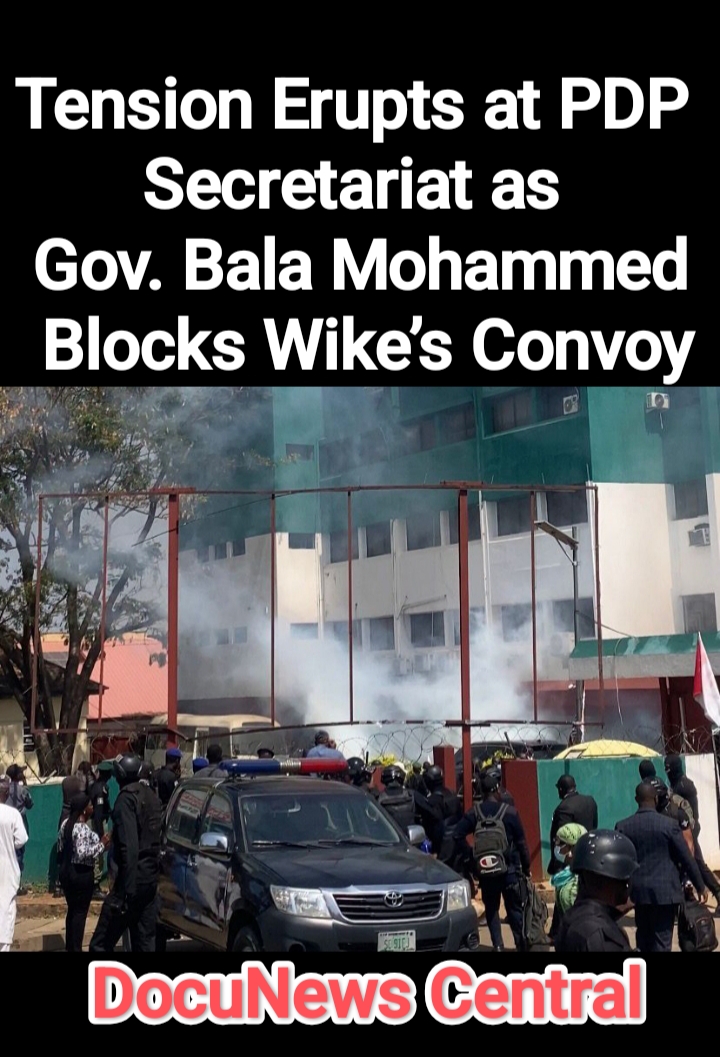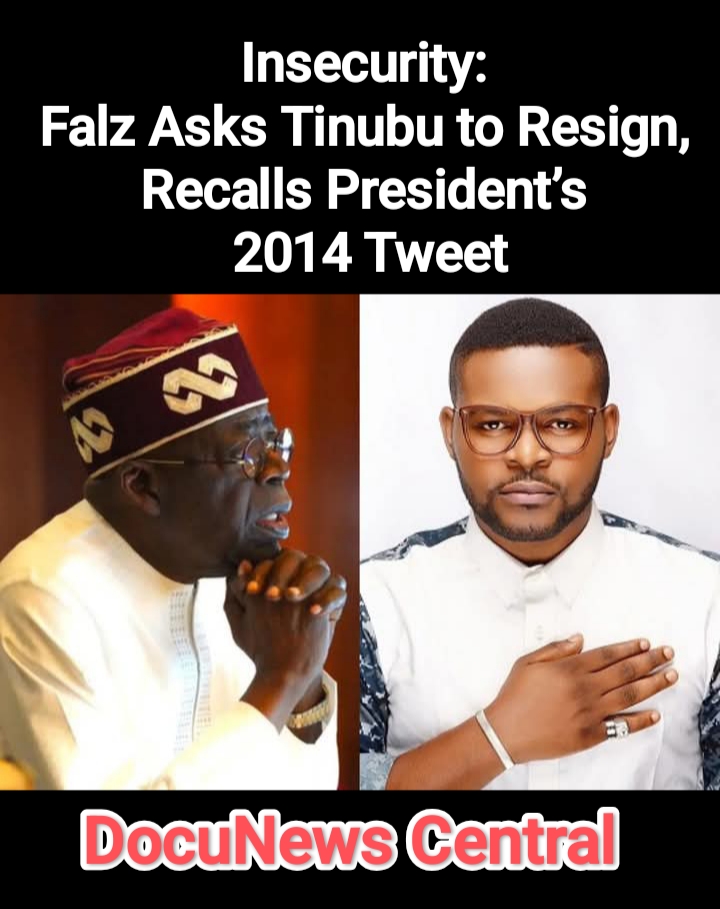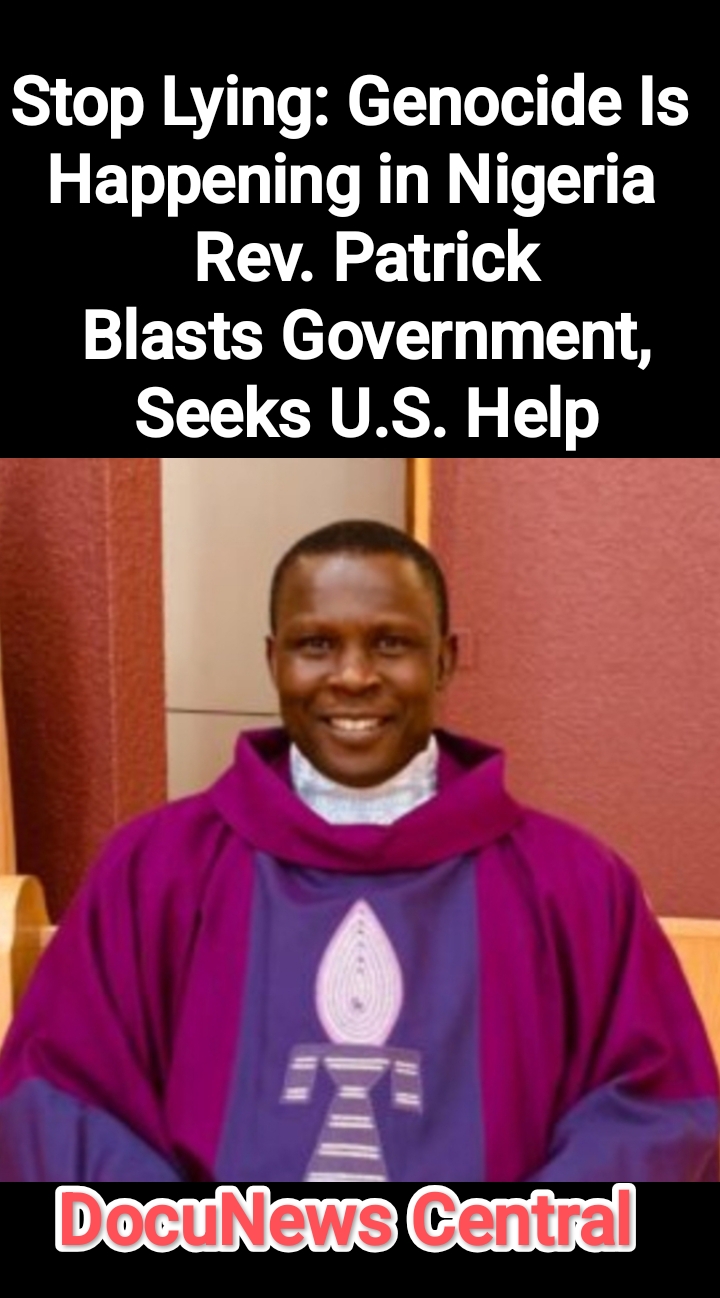
Published: 2025 | By DocuNews Central

In Abuja, tensions rose sharply on Monday as the #FreeNnamdiKanu protest led by activist and publisher Omoyele Sowore drew national attention. The demonstration — demanding the release of the detained Indigenous People of Biafra (IPOB) leader, Mazi Nnamdi Kanu — was met with force by security operatives.
Eyewitnesses alleged that live bullets were fired to disperse the crowd. However, the Nigeria Police Force strongly denied those claims, insisting that only teargas was used. This conflicting narrative has sparked widespread debate and renewed scrutiny of how protests are handled in Nigeria’s capital city.
Background: Why the #FreeNnamdiKanu Protest Happened
The protest on Monday was not the first time Nigerians have taken to the streets to demand the release of Nnamdi Kanu. The IPOB leader has been in custody since June 2021, facing multiple charges including treasonable felony and terrorism-related offenses.
His prolonged detention, despite several court rulings calling for his release, continues to fuel public anger and calls for justice, especially in Nigeria’s southeast region. Omoyele Sowore, publisher of Sahara Reporters, led the recent demonstration in Abuja to amplify those calls. The rally drew dozens of peaceful protesters, civil rights groups, and concerned Nigerians who believe Kanu deserves freedom or at least a fair judicial process.
How the Abuja Protest Unfolded
According to eyewitnesses and multiple news outlets, the demonstration began peacefully. Protesters gathered near the Federal High Court and other symbolic sites in Abuja, waving flags and chanting slogans demanding Kanu’s release.
Reports confirmed that security forces used teargas and barricades to disperse the protesters. However, soon after, chaos erupted. Witnesses told Channels TV that they heard gunshots and saw people fleeing in panic. Some claimed that live bullets were fired directly at the crowd. Activist Omoyele Sowore also alleged that protesters were assaulted and that security operatives, including soldiers, fired live rounds to intimidate the group.
Police Response: “We Did Not Fire Live Bullets”
“I can say it authoritatively that no live ammunition was fired today. Not a single live round. What people may have mistaken for gunshots were actually the sounds of teargas canisters being fired.” — Benjamin Hundeyin, Force Public Relations Officer
The Nigeria Police Force denied the accusations. The Force Public Relations Officer, Benjamin Hundeyin, addressed the media, stating that only teargas canisters were used and that police acted professionally and within the law. He urged Nigerians to disregard “false and sensational reports” circulating on social media.
Eyewitness Accounts Tell a Different Story
Despite the police denial, several eyewitnesses insist that live ammunition was fired. Videos shared on social media show protesters running in confusion while loud bangs can be heard in the background. A relative of Nnamdi Kanu told Channels TV they narrowly escaped after soldiers allegedly fired into the air. Protesters claim some individuals sustained injuries, although no deaths were officially reported.
Sowore accused police of beating and arresting some demonstrators, calling the incident “an attempt to silence peaceful dissent.” However, major international outlets reporting from the scene focused on teargas and heavy security presence; none confirmed the verified use of live rounds at the time of their reports.
Human Rights Groups Call for Investigation
In the aftermath, human rights organizations demanded a transparent and independent investigation into what happened. Groups such as Amnesty International Nigeria and the Civil Society Legislative Advocacy Centre (CISLAC) condemned the use of excessive force against peaceful demonstrators.
“The government must respect the right to peaceful protest. The excessive use of teargas, and especially any alleged live fire, must be investigated thoroughly.” — Amnesty International (Nigeria Director — statement excerpt)
These groups also called for the unconditional release of anyone arrested during the protest and for security operatives to be held accountable if misconduct is proven.
Media Coverage and Public Reaction
The event dominated national headlines and trended on social media with hashtags such as #FreeNnamdiKanu, #EndPoliceBrutality, and #JusticeForKanu. Major outlets — including The Guardian, Vanguard, Channels TV, and Daily Trust — covered the incident extensively.
Coverage varied: some local outlets highlighted eyewitness reports suggesting live bullets were used, while other international agencies focused on teargas and the large security presence. This discrepancy fueled debates online, with Nigerians divided over which narrative to accept.
Fact-Checking the Claims
After reviewing multiple reports, here’s what can be verified so far:
- The protest occurred in Abuja and was led by Omoyele Sowore on Monday.
- Police used teargas to disperse protesters — this has been confirmed by multiple news agencies.
- There are allegations that live bullets were fired, but no publicly presented physical or forensic evidence (e.g., bullet casings or medical reports) has corroborated those claims.
- The Nigeria Police Force has officially denied using live ammunition.
- Videos show panic and loud bangs; experts note these sounds can sometimes be produced by teargas launchers rather than firearms.
Based on available information, it is not proven that live bullets were used during the #FreeNnamdiKanu protest in Abuja.
Broader Context: Tension Over Kanu’s Detention
The protest reflects deeper frustrations among many Nigerians, particularly in the southeast, where Nnamdi Kanu has significant support. Supporters view him as a symbol of resistance and argue that his detention violates court orders and human rights. The Federal Government maintains that Kanu must face trial for offenses related to national security and that protests should not influence judicial processes.
The ongoing standoff continues to strain relations between the government and segments of the public.
Why This Matters for Democracy
Peaceful protest is fundamental to democratic life. Allegations that protesters were met with violence raise questions about civil rights and freedom of expression. If live ammunition was used against unarmed demonstrators, it would be a serious violation of national and international law. But until independent verification is produced, the truth remains contested.
Authorities face the challenge of building trust through transparency and accountability. Nigerians deserve clear answers about what occurred that day in Abuja.
Public Calls for Calm and Justice
Several civic leaders urged restraint and dialogue in the wake of the demonstrations. Omoyele Sowore called for more peaceful protest and legal action rather than confrontation. The Federal Government urged citizens to remain calm and promised that security agencies would act within the law.
Whether these assurances will ease public outrage remains unclear.
Conclusion: What We Know and What We Don’t
As of this writing, there is no conclusive public evidence that live ammunition was used during the #FreeNnamdiKanu protest. The Nigeria Police Force insists it fired only teargas, while protesters and eyewitnesses claim otherwise. Until an independent investigation is carried out and forensic or medical evidence is made public, both accounts remain contested.
This incident has reignited debates about freedom of speech, police accountability, and the rule of law in Nigeria. The coming days may bring more facts if further video evidence or forensic analysis becomes available.
DocuNews Central will continue to monitor this developing story and provide updates as verified facts emerge.
Copyright © 2025 DocuNews Central. All rights reserved.
Related: Nigeria news • Protests • Human rights






